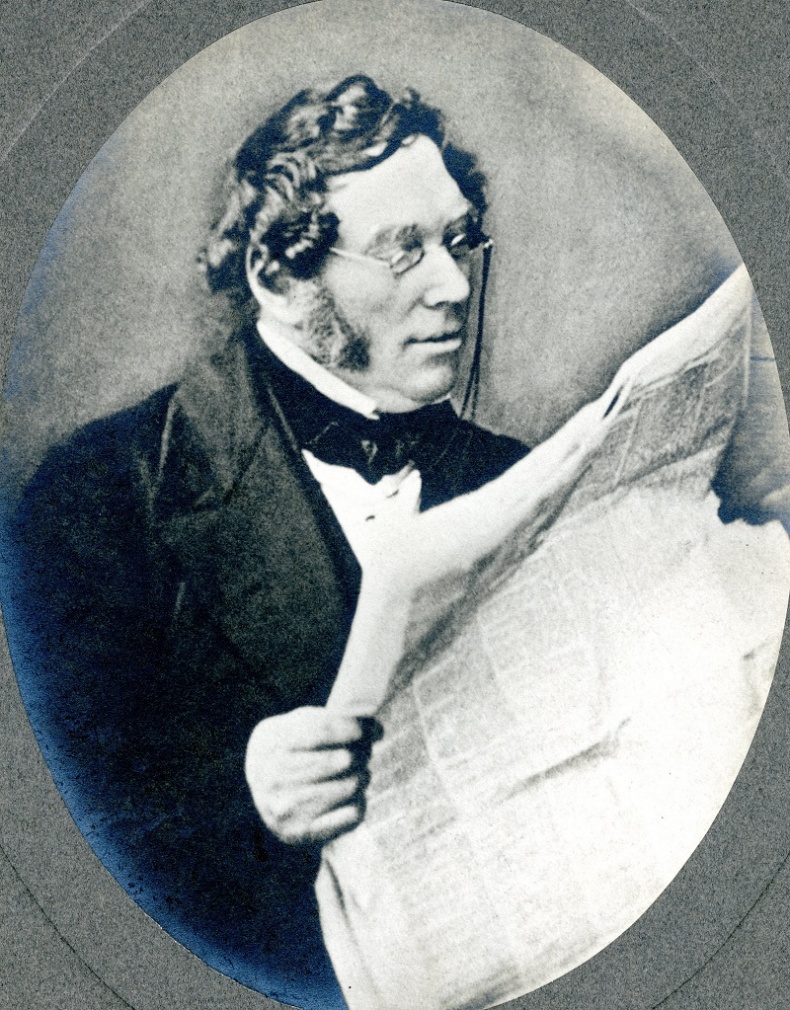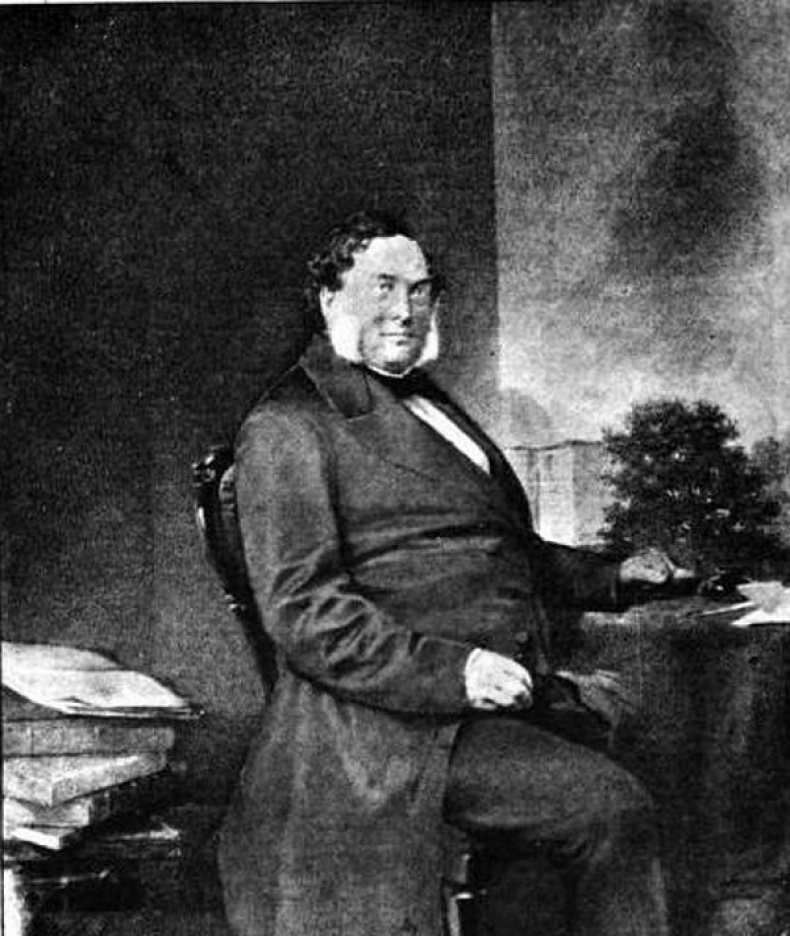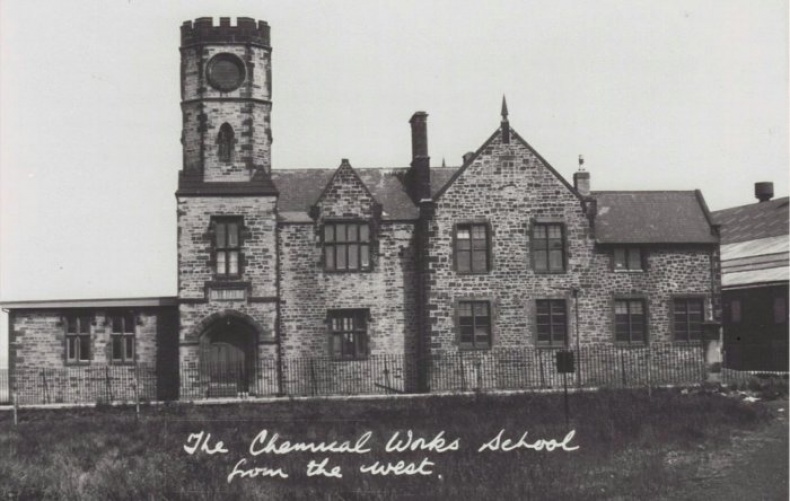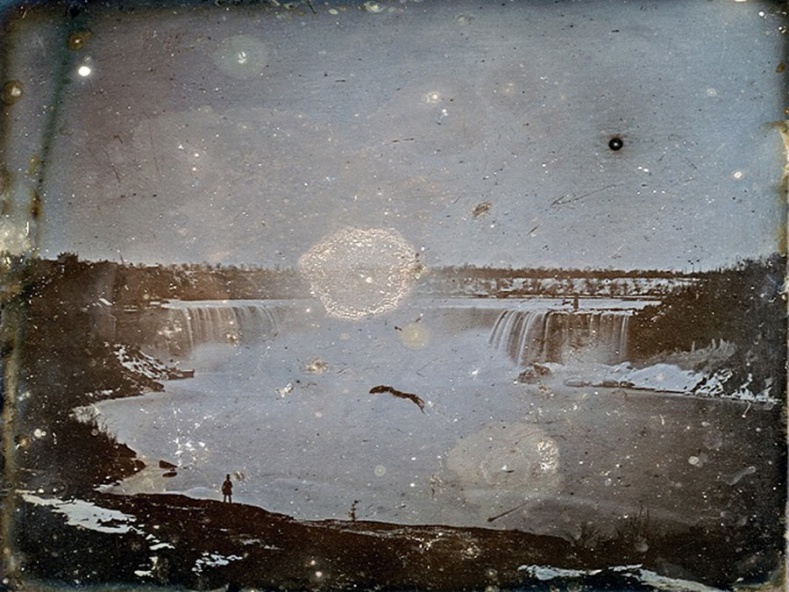



Pattinson, Hugh Lee I and Pattinson, Hugh Lee II
1796-1858 and 1819-1898
Industrialist and Industrial Chemist; Chemical Manufacturer
Hugh Lee Pattinson was born in Alston, the son of a Quaker shopkeeper. He was educated privately and excelled in academic pursuits, conducting scientific experiments at an early age. He started his working life at soap manufacturers owned by Anthony Clapham in Newcastle. In 1825 he became assay master to the lords of the manor at Alston, but he resigned in 1833 to go into partnership with John Lee and George Burnett, founding chemical works at Felling to extract silver from lead using the de-silvering process invented by Pattinson. The process, which exploits the fact that silver and lead melt at different temperatures, is simple and inexpensive. Its use spread from country to country and earned Pattinson £16,000 in royalties. The Felling complex was progressively diversified to produce alkali (soda ash), bicarbonate of soda and bleaching power. It was large enough to warrant its own coking plant and brickworks, extending over 17 acres and producing 14,000 tons of alkali and 6,000 tons of bleaching powder annually. Before the works closed in 1886 it employed 1,400 people.
A second Pattinson chemical venture was yet more long-lived and successful. In 1840 Pattinson acquired a well-appointed site at Washington near Sunderland that had previously been used as a paper mill and bleach mill. Here he first intended to manufacture magnesia using a process he had patented. The Washington Chemical Co. began operations in 1842, but as at Felling, Pattinson was driven by the market to diversify production to include carbonate of lead, lead oxide, alkali and soda crystals. In 1850 he admitted into partnership his sons-in-law Isaac Lowthian Bell and Robert Benson Bowman. Further land was now leased to expand and further diversify production favoured by the ease of importing bulky raw materials by water and exporting manufactured products by rail. Various innovative wares based on Pattinson technologies were displayed at the Great Exhibition in London in 1851, for which he served as a Local Commissioner. Under the direction of Lowthian Bell, the Washington works went from strength to strength and served as the testing ground for the Bell Brothers iron and steel empire at Middlesbrough.
Hugh Lee Pattinson Senior was an exceptionally curious, imaginative and innovative man, credited amongst many things with taking the first photograph of Niagara Falls in 1840. He was well-liked and made more popular by his compassion and charitable deeds. His obituary reads “He was a man of unbounded munificence. His public subscriptions were ever liberal, and his private charity extensive”. He established schools and reading rooms for his workers and their families in Washington. He was one of the largest subscribers to the Town Hall in Alston, where he laid the foundation stone in 1857. He was Vice-President of the Literary and Philosophical Society of Newcastle. Because of his generosity towards his workers, 600 of them are known to have attended his funeral in 1858.
Pattinson, Hugh Lee II
Hugh Lee Pattinson’s son, Hugh Lee Pattinson Jnr lived at Stotes Hall in Jesmond. On leaving school he joined his father in the chemical business, in time becoming a Director of the Felling Chemical Works alongside his younger brother, the industrial chemist John H. Pattinson (1828-1912), who was a founder in 1868 of the Newcastle Chemical Society, his cousin William Watson Pattinson (1813 - 1894) and the brothers Robert Robey Redmayne (1828 – 1909) and John Marriner Redmayne (1831 - 1903). The Pattinson and Redmayne families were evidently very close-knit, moving in the same social circles. On 22 February 1860, for example, when R.R. Redmayne was commissioned major in the 1st Newcastle Rifle Volunteers, Hugh was commissioned Captain.
Hugh had a strong belief in the value of education, both in terms of the wellbeing of his workforce, but also society more broadly. To this end, he and R.R Redmayne established a school in Felling next door to their chemical works in 1845. It included a reading room and library for the workmen employed in the factory. The Gateshead antiquarian John Oxberry (1857 – 1940) quotes from a circular produced by the Chemical works ahead of the opening of the school on 11 August 1845, exalting the virtues of education. The circular declared that without education a person would be “indifferent to their social duties and often ending as criminals” before continuing that the man who has a taste for reading “does not feel the want for the dangerous excitement of drinking and dissipation… the calm pleasures of study are open to every man that can read”. It proposes that a school would “endeavour to instil into the minds of the pupils, good and moral principles and make their lessons the means of useful knowledge”. When opened, the school charged parents 1d per week for each child, but in return, pupils were provided with books and other requisites. The school was taken over by the council in 1906 and eventually demolished in the 1950s to make way for houses.
The Chemical Works School was one of Hugh’s two main philanthropic gifts for the benefit of the people of Felling. The second was the beautiful Christ’s Church Felling, commissioned in 1866 and opened in 1871. Built in the Gothic style and decorated in pre-Raphaelite style then popular, the Church has a memorial tablet on the south side of the chancel commemorating its founders and benefactors H.L. Pattinson, R.R. Redmayne and J.M. Redmayne. The triumvirate of the Felling Chemical Works is to be found on the subscription lists for many other important philanthropic initiatives, including, fittingly in view of his family’s contribution to industrial chemistry, a donation by Hugh of £100 to the formation of the Newcastle College of Physical Science in 1871. Hugh Lee Pattinson died in London in 1898 and survived by his son Hugh Lee Pattinson III and his grandchildren Hugh Lee Pattinson IV and Lawrence. Hugh Lee Pattinson IV, a Sandhurst trained officer, died in World War I. Lawrence (1890-1955), an aviator, was awarded the military cross in 1915 and the distinguished flying cross in 1918. He was captured by the Germans, released, knighted, appointed Chief of Staff, RAF Cranwell, and Air Aide-de-Camp to King George V.
References
Cumberland & Westmorland Newspaper Archives (2018). Hugh Lee Pattinson Obituary, Available here (Accessed: 05/06/2018).
Heald, H. (2010). William Armstrong: Magician of the North, Carmarthen: McNidder & Grance.
John Oxberry 'Felling Notes' Vol. 29 p.78. cited in, Spencelayh, D. (1968). The work of the Heworth School Board 1875 - 1903, Master of Education Thesis, Durham University.
Lonsdale, H. (1867). The Worthies of Cumberland, London: George Routledge & Sons.
Lomas, R. (2009). An encyclopaedia of North-East England, Edinburgh: Birlinn Ltd.
Mosley, C. (Ed.) (2003). Burke's Peerage, Baronetage & Knightage, Delaware: Burke's Peerage Ltd.
Woodward, B.B. (2004). Pattison, Hugh Lee, Oxford Dictionary of National Biography, Available here (Accessed 14/08/2018).